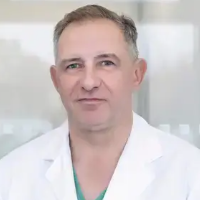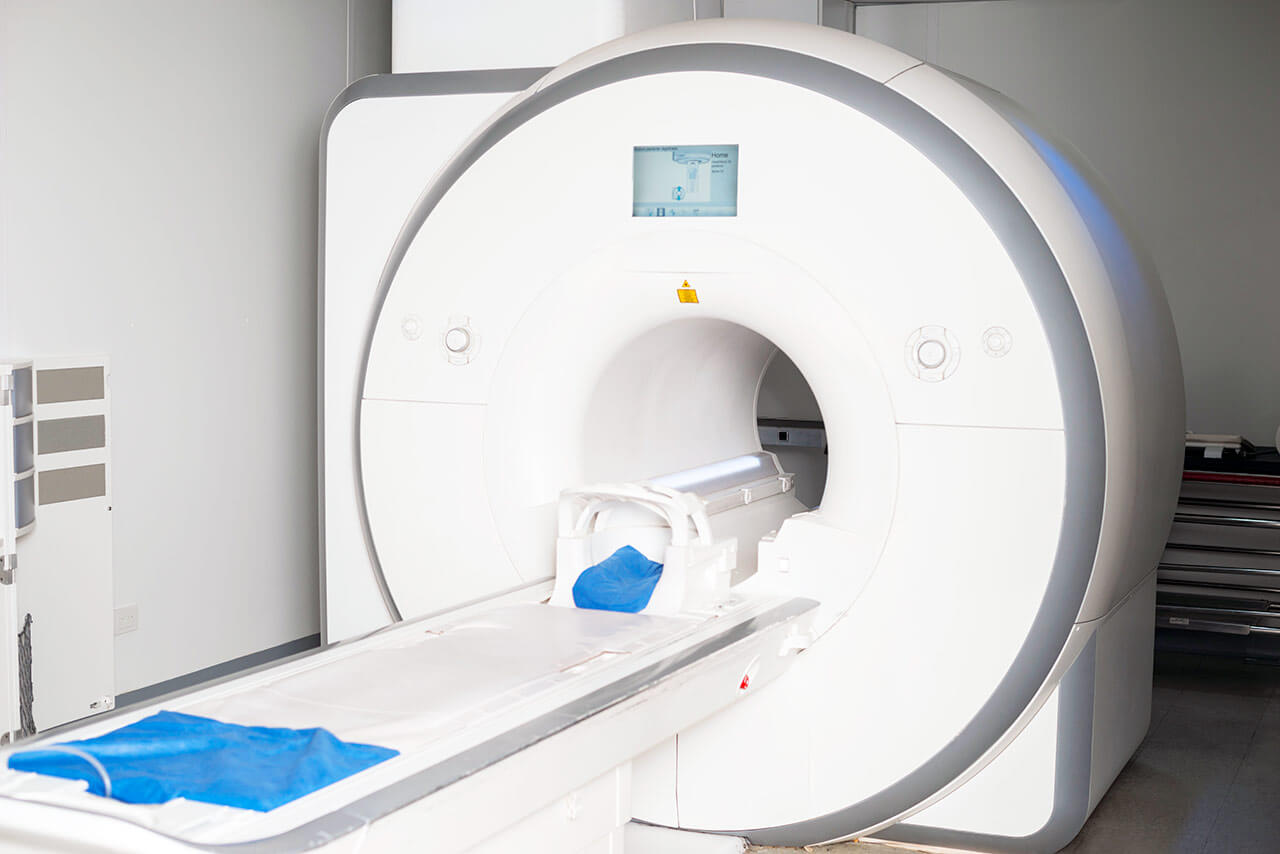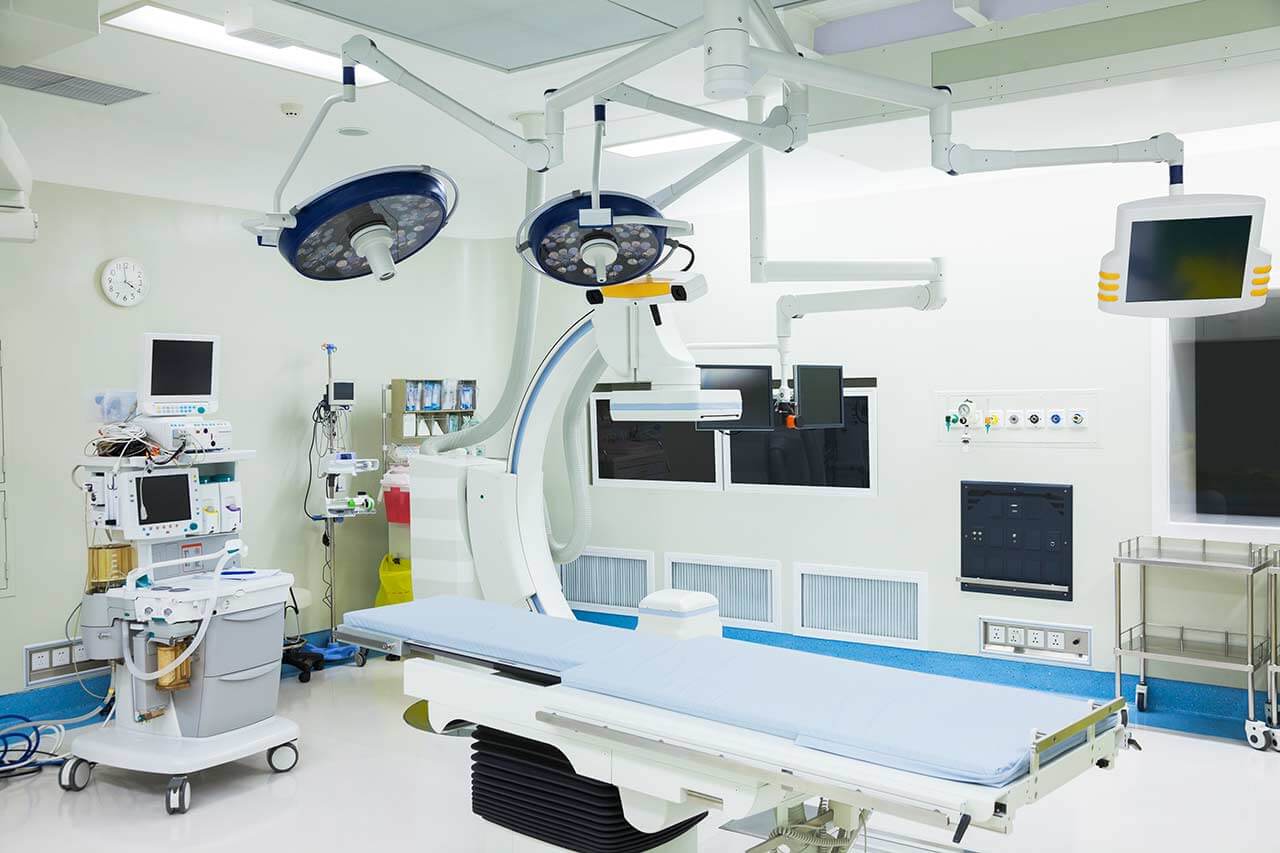
The program includes:
- Initial presentation in the clinic
- clinical history taking
- review of medical records
- physical examination
- dermatological skin examination
- laboratory tests:
- complete blood count
- biochemical analysis of blood
- inflammation indicators (CRP, ESR)
- indicators blood coagulation
- coagulogram
- doppler and duplex venous
- phlebography
- preoperative care
- lymphaticovenular bypass surgery
- control examinations
- the cost of essential medicines and materials
- nursing services
- full hospital accommodation
- developing of further guidance
Required documents
- Medical records
- Photo of the affected body regions
Service
You may also book:
 BookingHealth Price from:
BookingHealth Price from:
About the department
The Department of Vascular Surgery at the Nuremberg Hospital provides the full range of diagnostic and therapeutic services for patients with diseases of the arteries, veins, and lymphatic vessels. The department has been treating patients with aortic aneurysms, carotid artery stenosis, and occlusive peripheral arterial disease for many years. The department is a leading medical facility in Europe for endovascular treatment of aortic aneurysms using innovative prostheses. Thanks to the availability of state-of-the-art endovascular equipment, surgical interventions are performed using sparing minimally invasive techniques. The department also has advanced diagnostic equipment, including high-resolution systems for magnetic resonance imaging, computed tomography, and ultrasound scans. Whenever required, patients are diagnosed and treated in close cooperation with the Department of Radiology (for example, in cases of abdominal aortic or carotid artery stenting). More than 3,500 patients are treated in the department every year, with approximately 2,000 of these patients receiving outpatient medical care. The health of patients is in the safe hands of a highly professional medical team consisting of 17 physicians and 33 nursing staff members. The specialists have all the necessary technical resources at their command to provide patients with high-quality treatment in accordance with international standards. The department is headed by Prof. Dr. med. Eric Verhoeven.
The department's surgeons often treat aortic, popliteal, and visceral artery aneurysms. An aneurysm is a local expansion of the blood vessel with gradual thinning of its wall, resulting in rupture of the affected blood vessel and life-threatening internal bleeding. The optimal treatment option for large aneurysms (5 cm or more in size) is surgery. Up to 90% of interventions for abdominal and thoracic aortic aneurysms are performed in the department using sparing endovascular techniques. The procedure involves the placement of a stent graft, which is delivered to the pathological focus using catheter-based techniques in a folded form. After reliable fixation of the stent graft in the required position, it straightens out, strengthening the blood vessel wall in the area of its protrusion and thus preventing aneurysm rupture. Endovascular stent implantation is performed under local anesthesia and X-ray guidance. Open surgery may be indicated in rare cases where endovascular treatment is not possible due to blood vessel anatomy. During a classic open surgery, surgeons perform a laparotomy and implant a Y-shaped prosthesis, thanks to which the aneurysm is excluded from the systemic blood flow.
The department annually performs more than 500 operations to treat carotid artery stenosis, which occurs due to the deposition of atherosclerotic plaques on the walls of the blood vessels. If left untreated, a patient is at risk of a stroke, which often leads to disability or even death. An endovascular procedure called stent implantation is available in the department for treating carotid artery stenosis. The procedure is performed through a puncture in the radial, brachial, or femoral arteries under local anesthesia. For stent implantation, a special balloon is inserted into the artery using catheter-based techniques, after which it is inflated and widens the lumen of the artery. Following that, doctors implant the stent, which is a metal framework that serves to prevent future narrowing of the artery lumen. Once the stent implantation has been completed, surgeons deflate the balloon and remove it from the artery along with the catheter.
Another priority focus of the department's clinical practice is the surgical treatment of occlusive peripheral arterial disease of the lower limbs. The pathology is characterized by narrowing or obstruction of the leg arteries due to atherosclerotic plaque formation, leading to impaired blood supply to the lower limbs and severe pain during walking. As the pathology progresses, pain intensifies, and the patient may suffer from pain even at rest. Non-healing wounds appear on the feet. The treatment of early stages of occlusive peripheral arterial disease of the lower limbs includes only conservative treatment with antiplatelet drugs and smoking cessation, if the patient has this bad habit. In complex cases, patients are indicated for a surgical intervention. Depending on specific clinical indications, the department's vascular surgeons perform endovascular interventions, classical open surgery, or hybrid interventions that combine endovascular and open techniques.
The department's key clinical focuses include:
- Diagnostics and treatment of the aortic, popliteal, and visceral artery aneurysms
- Diagnostics and treatment of carotid artery stenosis
- Diagnostics and treatment of aortic aneurysms
- Diagnostics and treatment of occlusive peripheral arterial disease of the lower limbs
- Diagnostics and treatment of varicose veins
- Diagnostics and treatment of acute deep vein thrombosis of the lower limbs
- Dialysis access formation (in cooperation with the Department of Nephrology)
- Other medical services
The department's surgical options include the following:
- Endovascular interventions
- Classic open interventions
- Hybrid surgical procedures combining classical and endovascular surgical techniques
- Other surgical interventions
Curriculum vitae
Higher Education and Postgraduate Training
- 1988 Doctorate, Catholic University of Leuven, Belgium.
- 1994 Board certification in Surgery.
- 1995 Board certification in Vascular Surgery.
- 1995 - 2006 Managing Senior Physician in the Department of Endovascular Surgery, University Hospital Groningen, Netherlands.
- September 2005 Habilitation, University of Groningen. Subject: "Endovascular treatment of aneurysms: results and research of new techniques".
- Since 2009 Head of the Department of Vascular Surgery at the Nuremberg Hospital.
- January 2011 Extraordinary Professorship for Surgery at the Faculty of Medicine, University of Lisbon (treatment of complex aortic aneurysms using fenestrated and branched prostheses).
- October 2011 Extraordinary Professor for Vascular Surgery at the Faculty of Medicine, Catholic University of Leuven (treatment of complex aortic aneurysms using fenestrated and branched prostheses).
- January 2012 Inaugural Lecture, Catholic University of Leuven.
- 2014 Full Professor for Vascular Surgery, Paracelsus Medical Private University, Nuremberg.
Clinical Focuses
- Endovascular treatment of ruptured aneurysms.
- Endovascular treatment of thoracic aortic aneurysms.
- Treatment of cerebrovascular diseases.
- Minimally invasive treatment of atherosclerotic occlusive processes in the peripheral blood vessels.
Memberships in Professional Societies
- Belgian Society for Vascular Surgery.
- Netherlands Society for Vascular Surgery.
- European Society for Vascular Surgery (ESVS).
- International Society for Endovascular Surgery (ISES).
- International Society for Vascular Surgery (Founding Member).
- German Society for Vascular and Endovascular Surgery.
Work in Editorial Boards
- Editorial Board of Chirurgia Polska.
- Editorial Board of Técnicas Endovasculares.
- Editor of the following journals: Journal of Endovascular Therapy, European Journal of Vascular and Endovascular Surgery, Polish Journal of Vascular Surgery, Indian Journal of Vascular Surgery.
Photo of the doctor: (c) Klinikum Nürnberg
About hospital
According to the reputable Focus magazine, the Nuremberg Hospital ranks among the top German medical facilities!
The hospital is one of the largest, highly specialized medical centers in Europe and positions itself as the maximum care hospital. The healthcare facility is an academic hospital of the Paracelsus Medical University in Nuremberg. It houses 42 departments, institutes, and highly specialized centers focusing on various medical fields. All the hospital's employees work hand in hand for the benefit of their patients. The specialists strive to provide top-class medical care for every patient. Moreover, the medical team always shows a humane attitude and understanding towards the patient's life situation, making every effort to support them during the entire therapeutic process.
The total number of beds in the hospital is 2,233. The medical team consists of more than 8,400 employees, including many world-famous doctors and professors who had their clinical training at the best medical facilities in Germany, other European countries, and the USA. The hospital admits more than 100,000 inpatients and more than 170,000 outpatients annually. The number of patients who come to the hospital steadily increases every year, which is the best confirmation of its high standards and outstanding treatment results.
The cornerstone of successful clinical practice is state-of-the-art technical infrastructure. The hospital offers its patients innovative technologies such as the Da Vinci surgical system, devices for stereotactic procedures, intraoperative radiation therapy, angiography, PET CT devices, high-intensity focused ultrasound, 64-slice CT scanners, and other advanced medical devices. The combination of cutting-edge technical facilities and the high competence of the physicians allows for the provision of effective treatment even in the most complex cases.
The Nuremberg Hospital is undoubtedly one of Germany's leading medical facilities, where patients benefit from modern infrastructure, precise diagnostics, effective treatment, and responsive care.
Photo: (с) depositphotos
Accommodation in hospital
Patients rooms
The patients at the Nuremberg Hospital live in comfortable single and double rooms. Each patient room is equipped with an ensuite bathroom with a shower and a toilet. Standard rooms include an automatically adjustable bed, a bedside table, a wardrobe for storing clothes, a table and chairs for receiving visitors, a TV, and a radio. The hospital also offers Wi-Fi.
If desired, patients can live in enhanced-comfort rooms. Such patient rooms are more spacious, and their furnishings correspond to the level of an upscale hotel.
Meals and Menus
The patients at the hospital are offered tasty and balanced meals three times a day: breakfast, lunch, and dinner. The patients have a daily choice of three dishes for lunch and dinner, while breakfast is served as a buffet.
If, for some reason, you do not eat all foods, you will be offered an individual menu. Please inform the medical staff about your food preferences prior to treatment.
Further details
Standard rooms include:
Accompanying person
Your accompanying person may stay with you in your patient room or at the hotel of your choice during the inpatient program.
Hotel
You may stay at the hotel of your choice during the outpatient program. Our managers will support you for selecting the best option.





